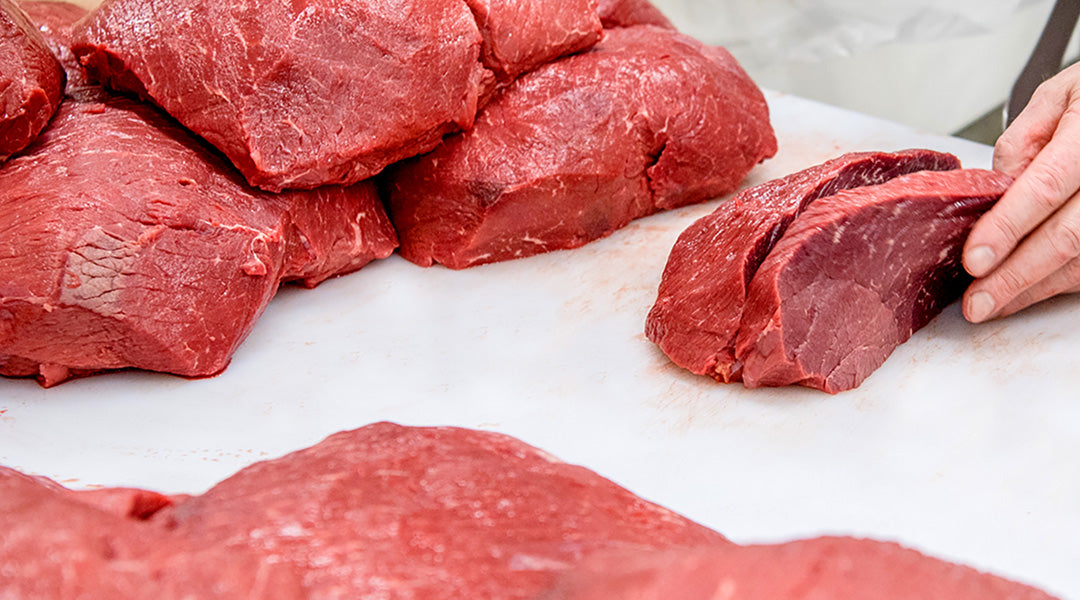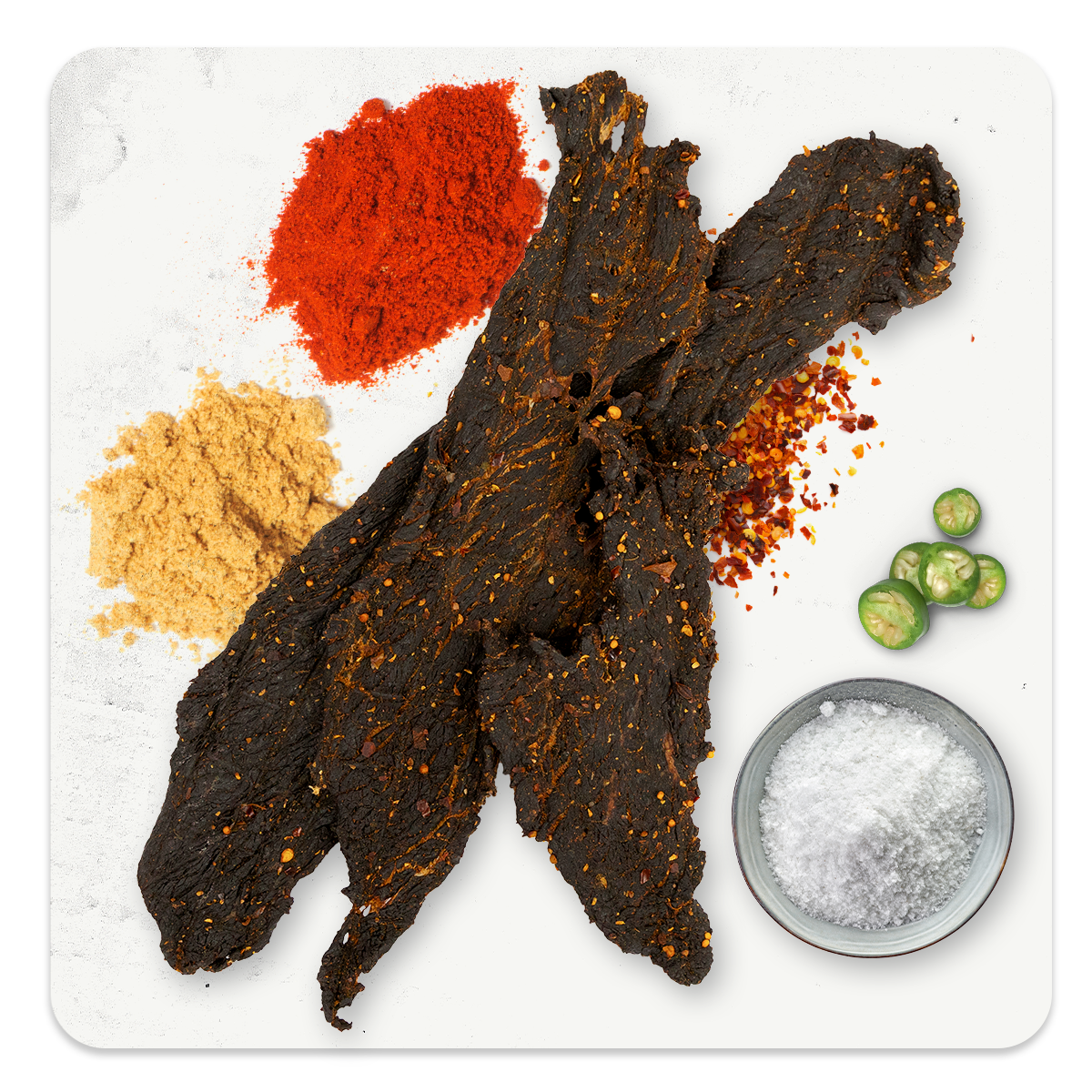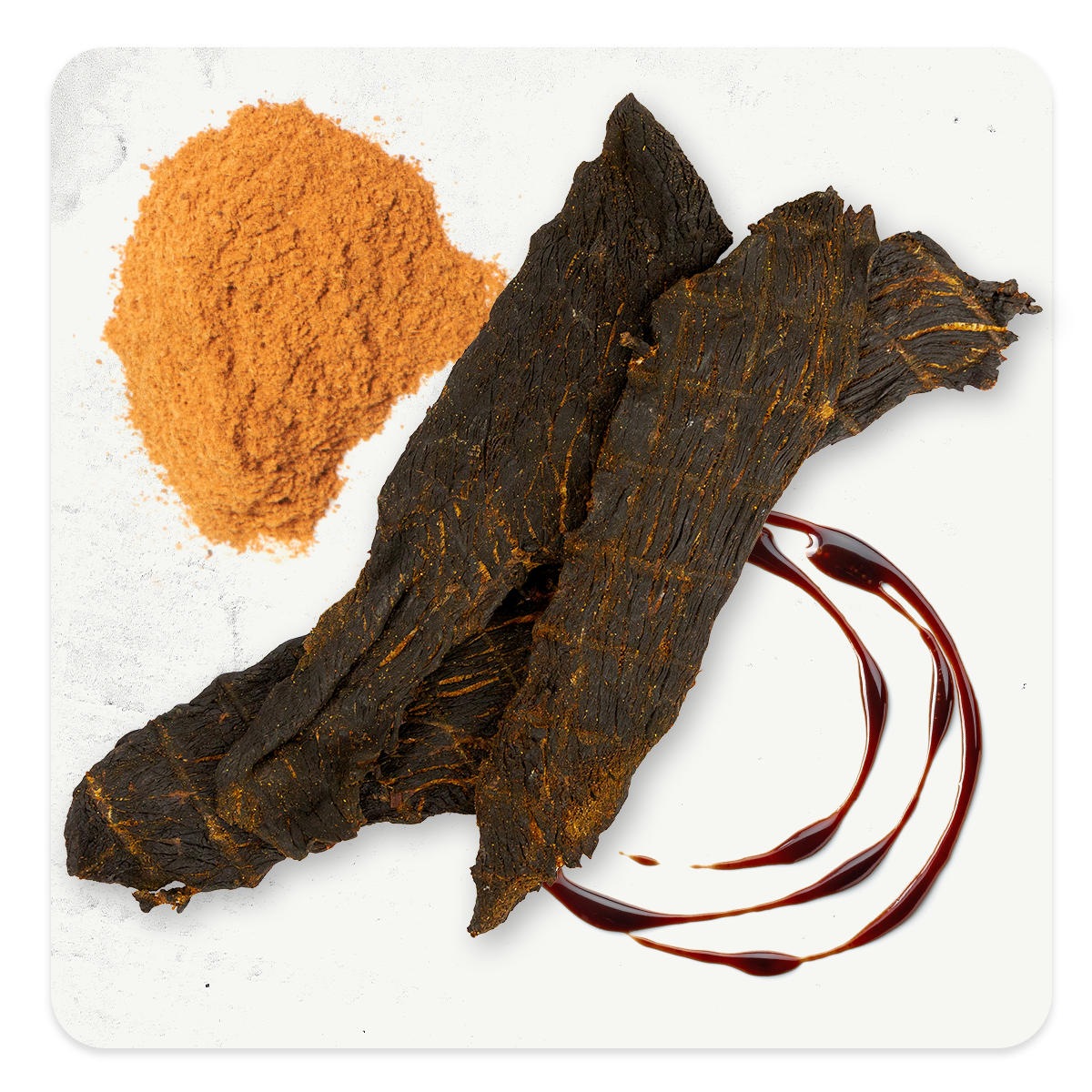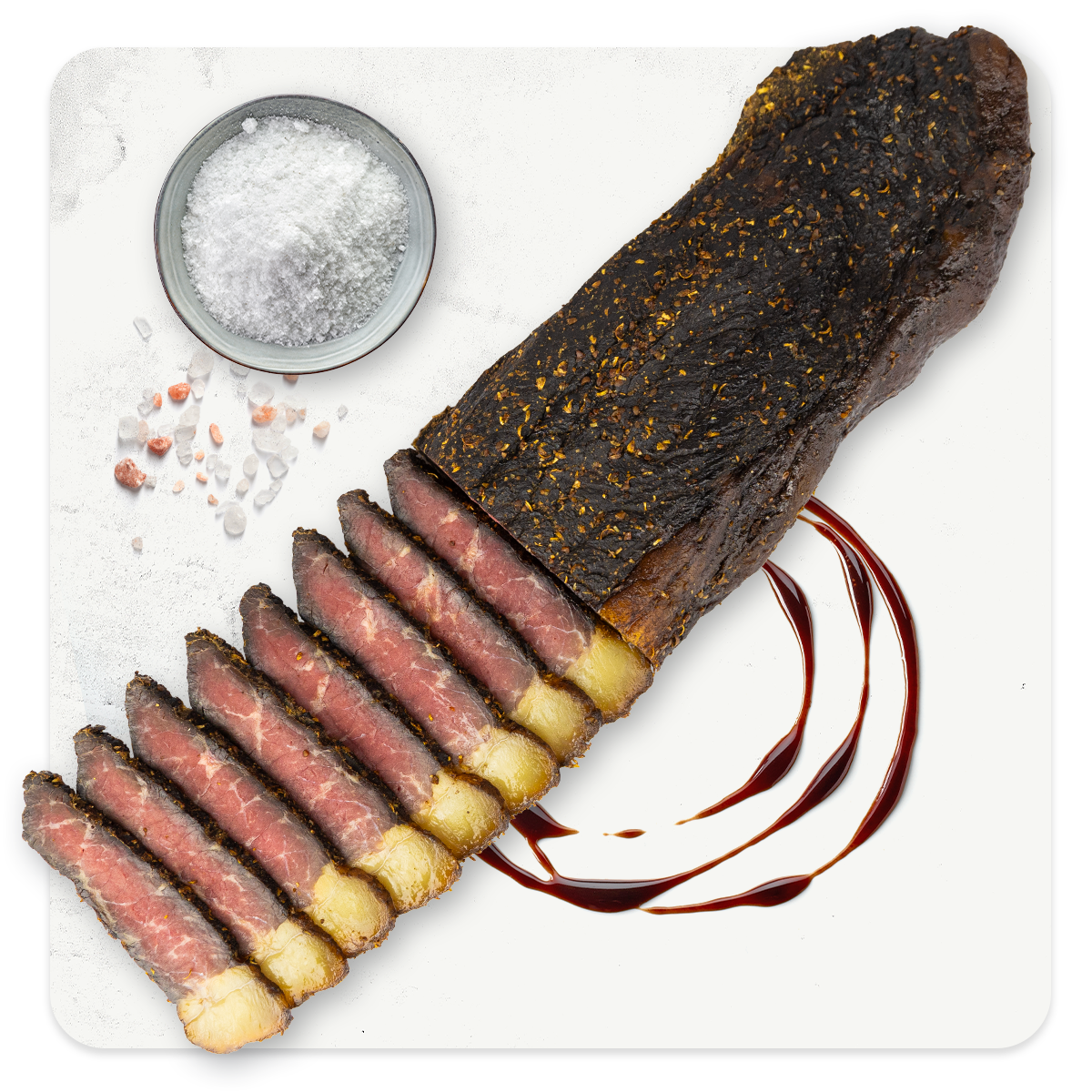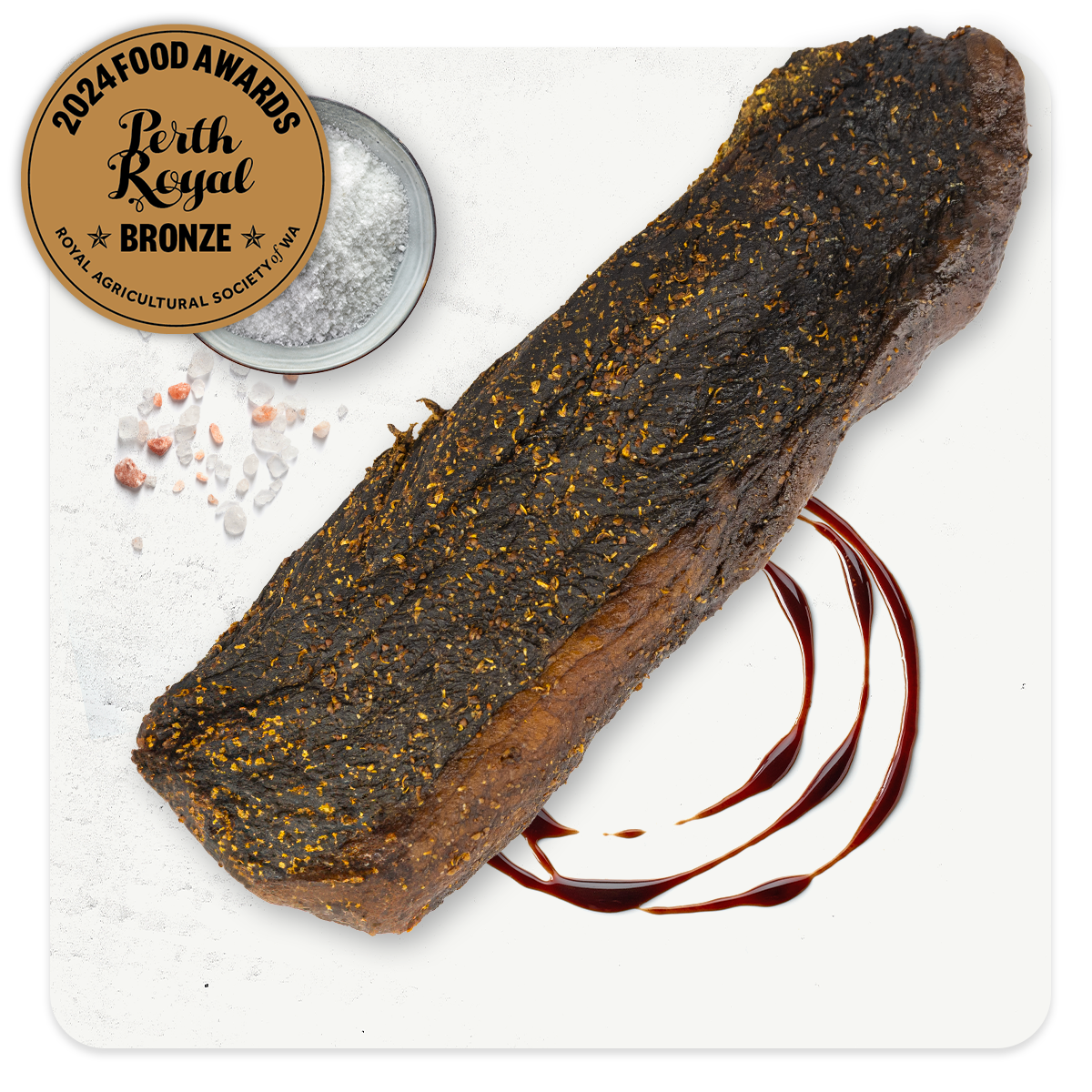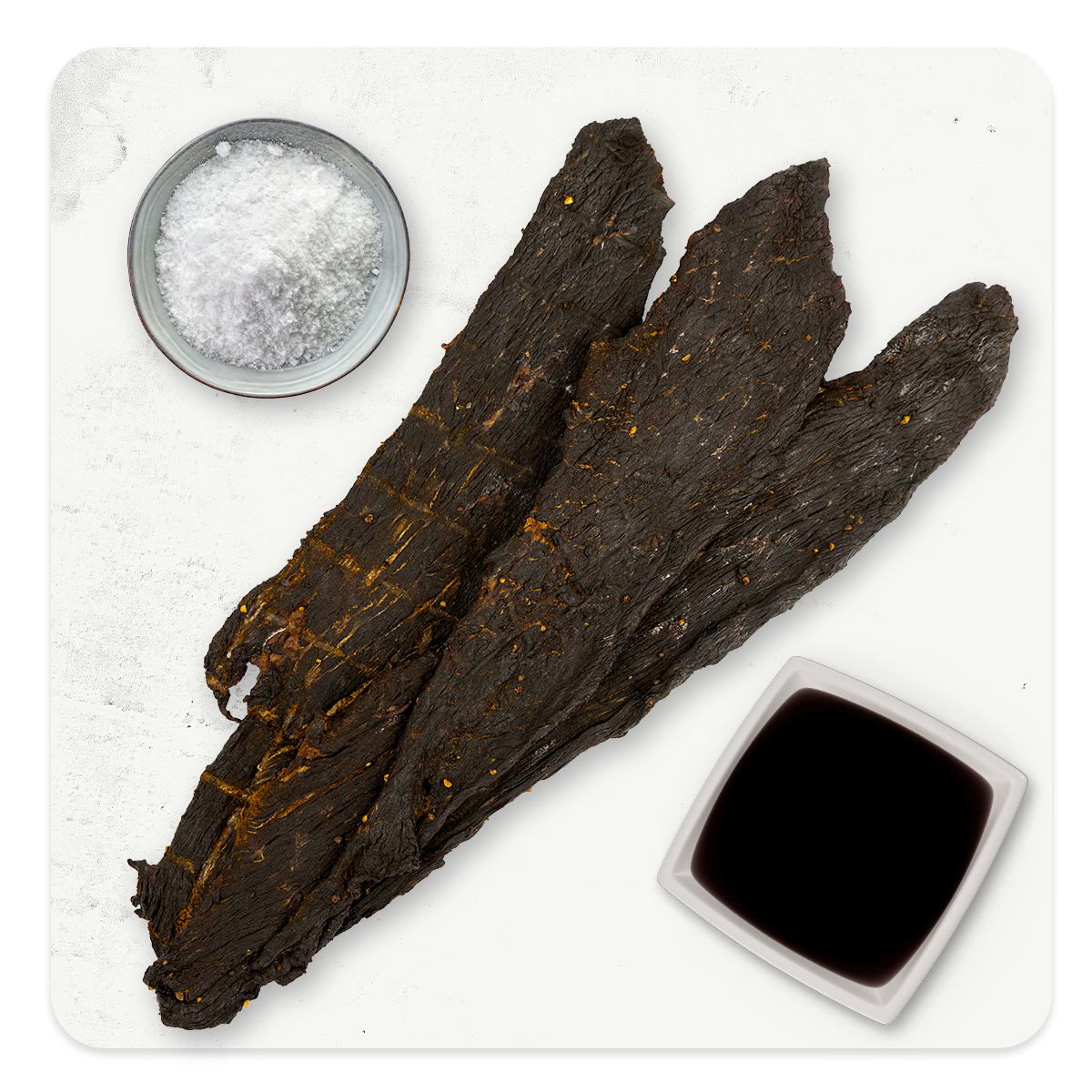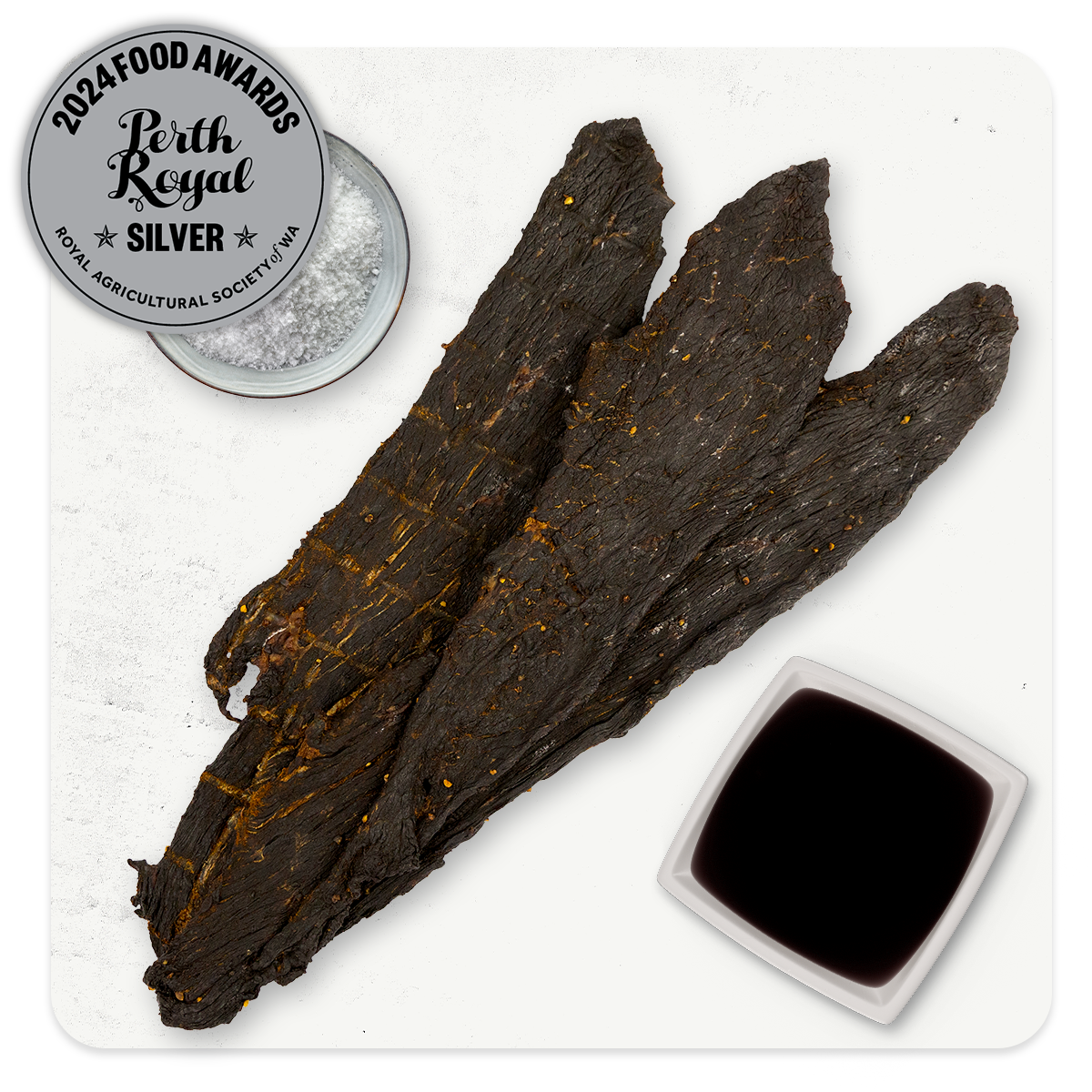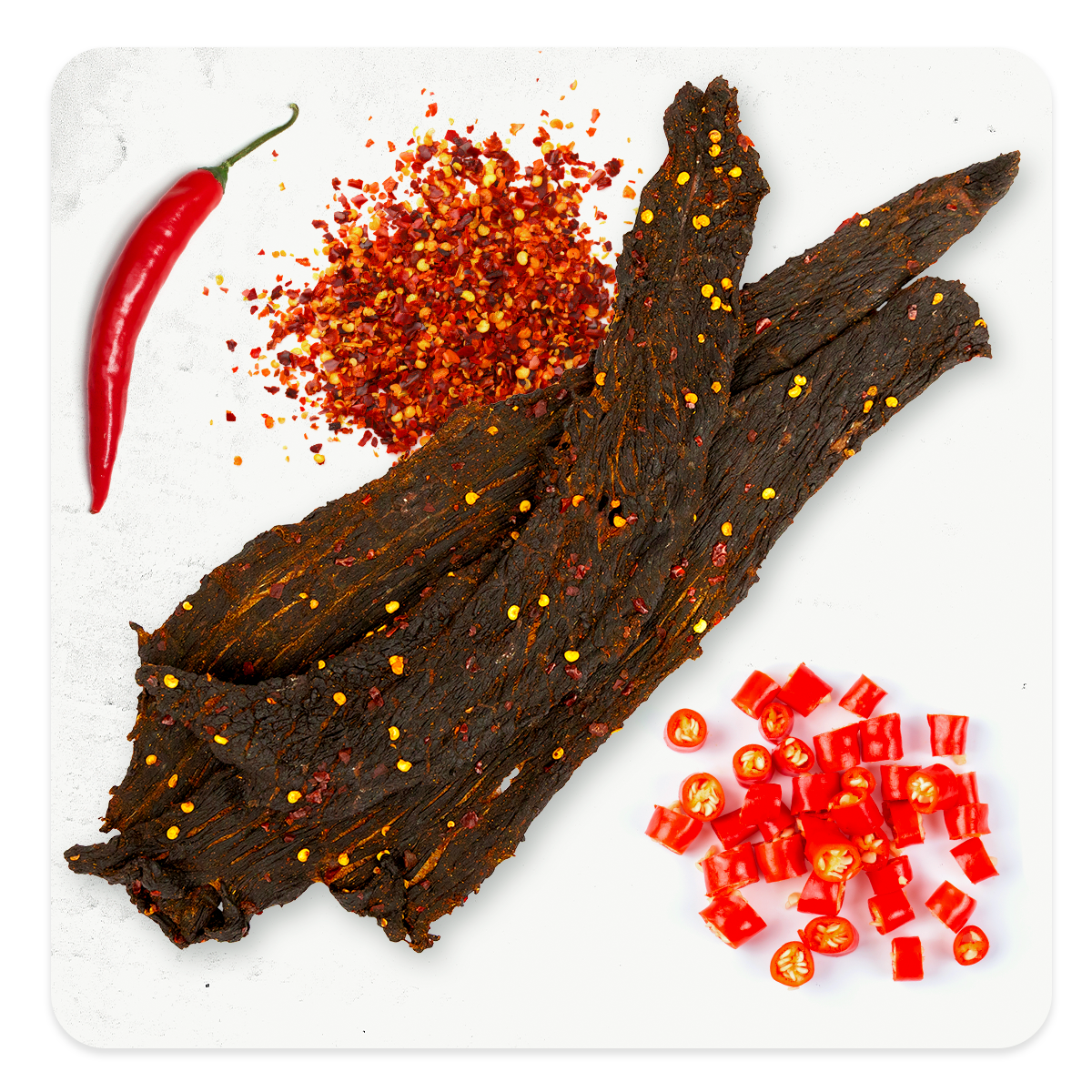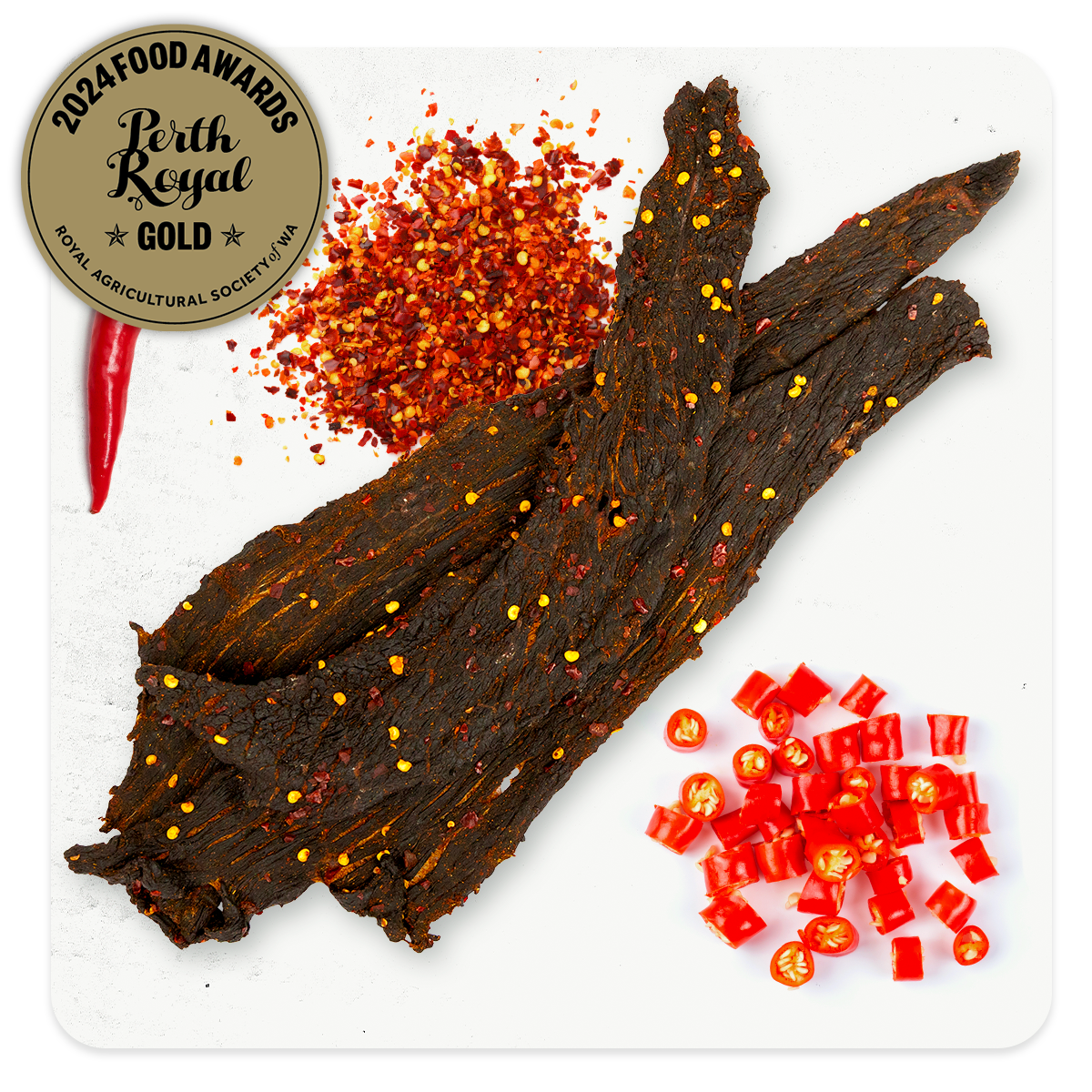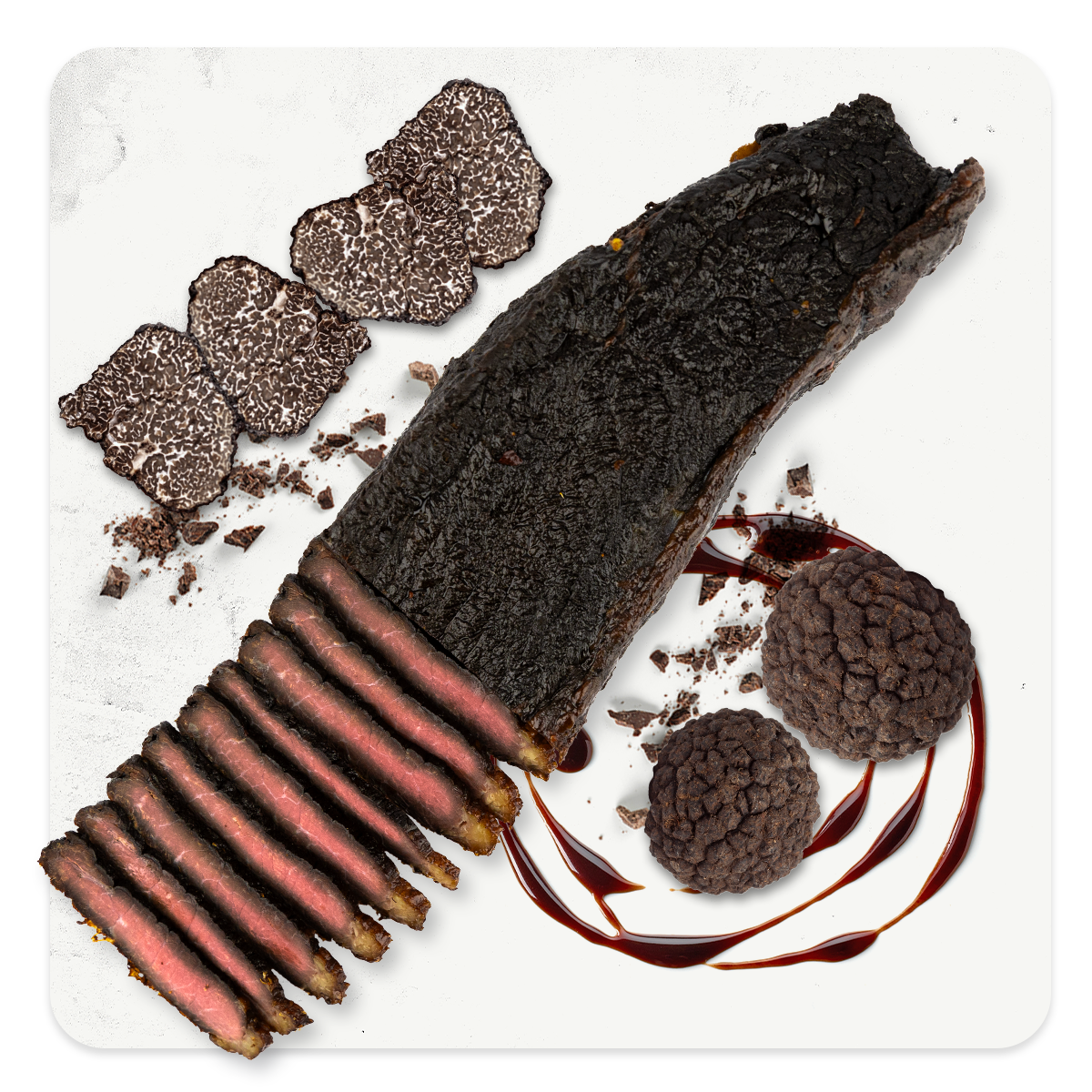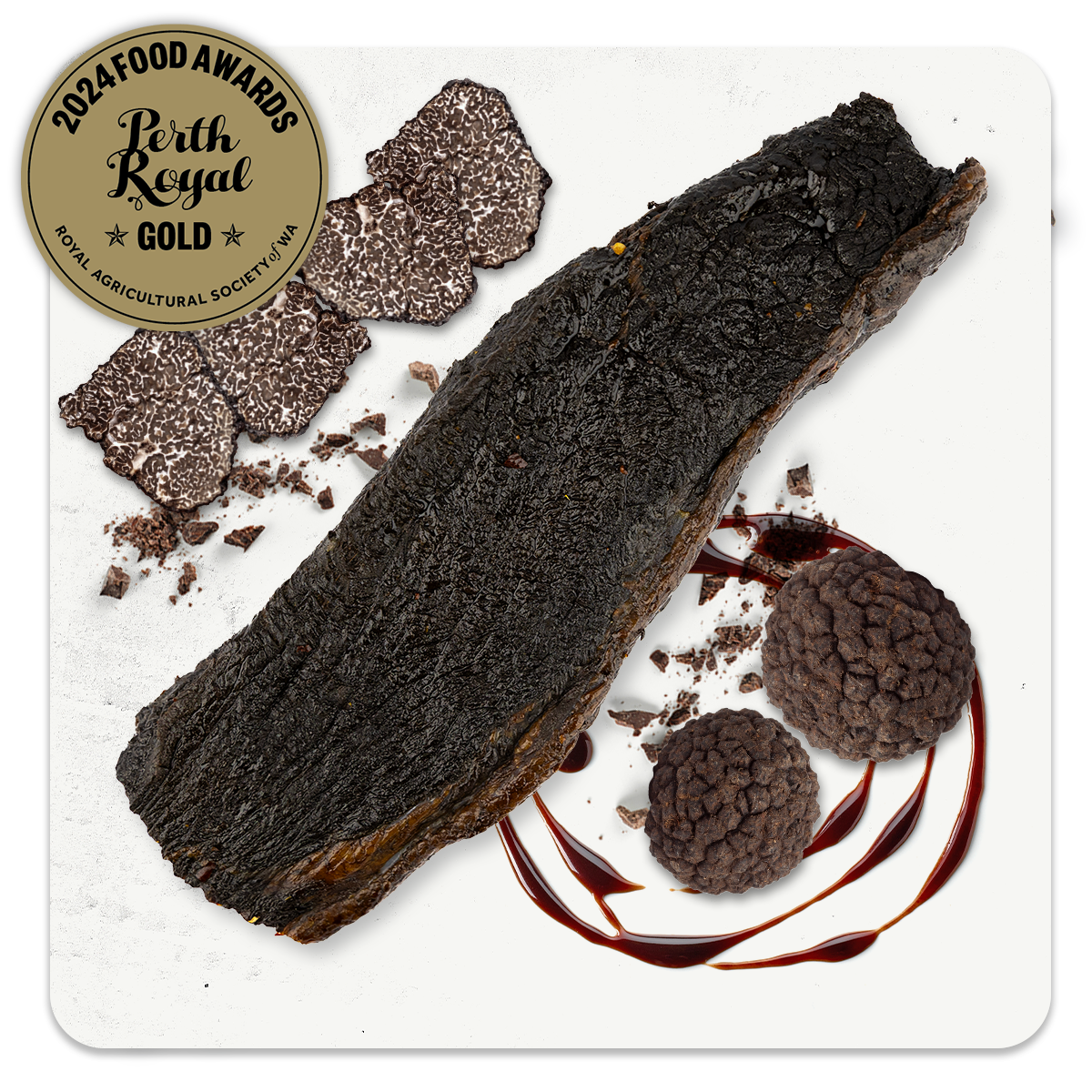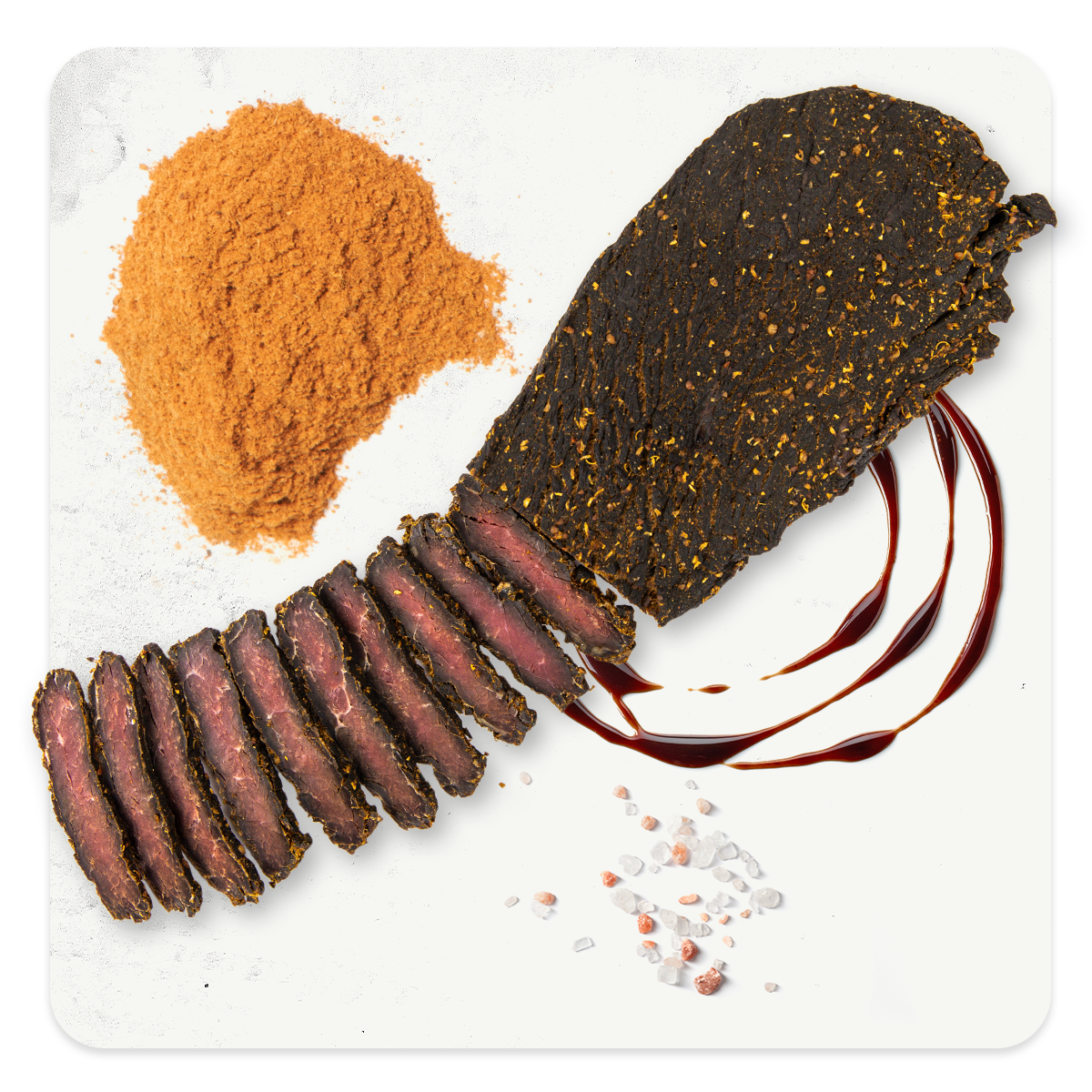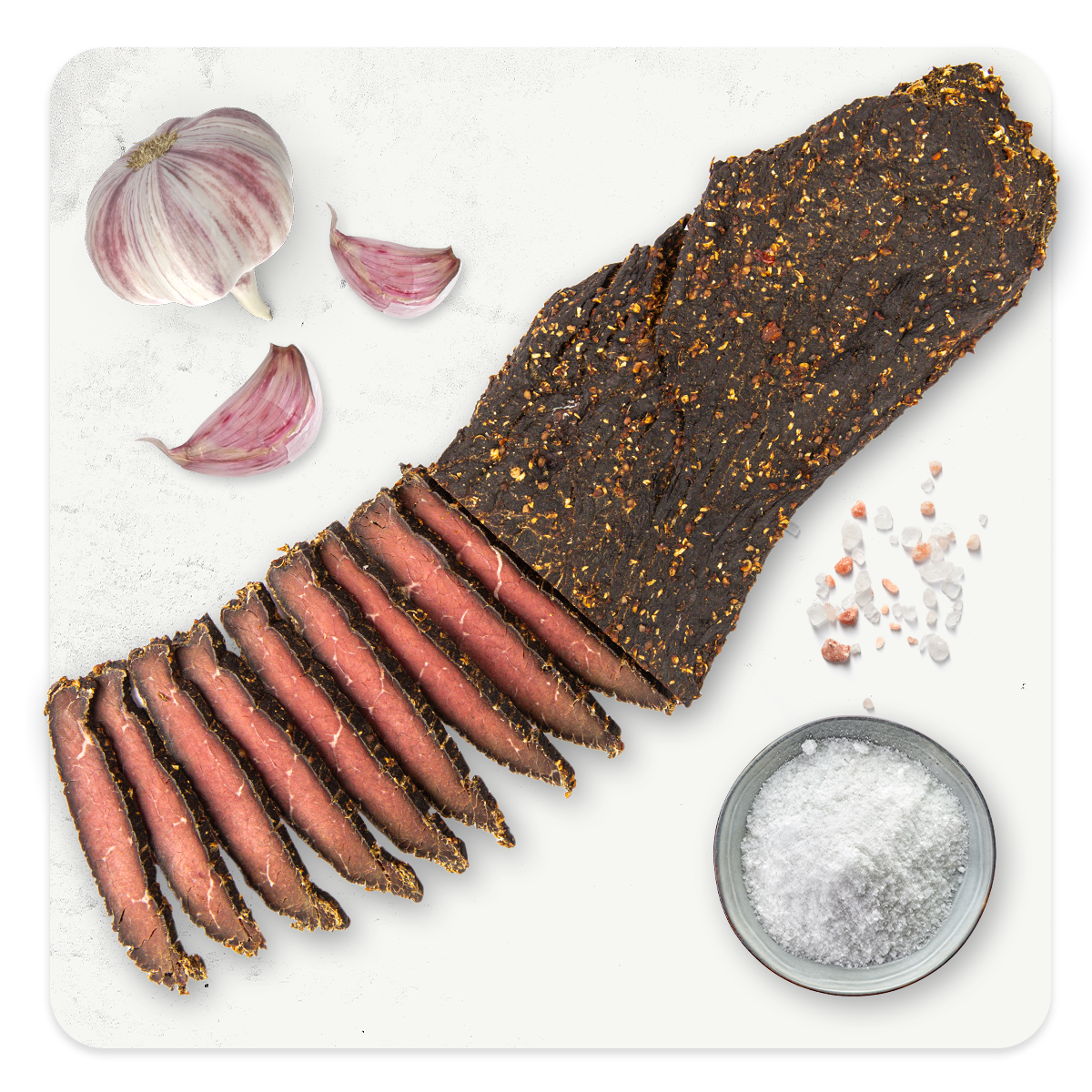We love meat. And we want to make sure you can taste our passion for a quality chunk of meat in every bite. That’s why we choose only topside MSA beef to create every delicious piece of air dried meat that you know and love. But it's not just about the quality and flavours - choosing MSA beef means directly contributing to improving the Australian beef industry. Below, we’ve summed up what you need to know about MSA beef into bite-sized chunks.
What is MSA?
Meat Standards Australia (MSA) is an industry description system that helps the consumer by taking the guesswork out of buying beef. They do this by labelling each cut with an eating quality grade and recommended cooking method.
Before hitting supermarket shelves, MSA graded meats must meet the standards set by consumers at one of three quality levels: MSA 3, MSA 4 or MSA 5. Basically, MSA beef helps make the quality and price of beef reliable and consistent.
Hold up - who’s calling the shots?
Meat & Livestock Australia (MLA) have put in place the MSA grading system for beef that puts the customer’s needs first, values accountability through transparency, and outcomes that have a positive impact on the Australian red meat and livestock industry.
What is the impact of MSA grading?
The MSA labels advise consumers of the correct cooking method for every piece of beef to assure a standard eating quality result. At the retail level, these labels can help determine the price of meats, which replaces the complex and misleading system of cut names and quality descriptions that may be unregulated.
Who determines the MSA grade?
The MSA grade is decided by you, the consumer. All MSA beef is graded on the basis of the consumer test score predicted for a particular beef muscle cooked by the nominated method. It’s a big topic but you can find out more about it on the MLA website or MSA Tips & Tools: How MSA grades are determined.
How does MSA grading work?
The MSA grades are established by taking into account the effects of all factors that can affect the final eating quality. These grades are set from the analysis of consumer test results. To date, a huge database of over 86,000 consumers across 8 countries have participated in MSA consumer testing providing scores on the eating quality of over 603,000 beef samples. That’s a whole lotta opinion on beef to cover!
The MSA-trained graders also collect information from cattle suppliers, abattoirs, and chillers. This info is then put into a computer that takes into account each of these factors and estimates their effect on eating quality. The MSA grade score is then produced, which takes into account tenderness, juiciness, flavour, and overall liking scores.
What makes MSA grading reliable?
MSA accredited graders grade on behalf of the industry. Graders are frequently monitored, assessed, and analysed to maintain the accuracy of their work. Every bit of unsatisfied consumer feedback is heard and traced back to the source.
Who gets to use the MSA grading system?
Anyone that chooses to participate in the MSA system is licensed and on the basis of providing detailed audits and total product integrity. MSA training is available to all sectors of the beef supply chain to ensure participants have a solid understanding of the MSA system fundamentals.
Help yourself to another bite
Now that you’ve read up on these cool facts, you’re probably wondering “how is beef jerky made?” or already reaching for another handful of chewy, protein-packed goodness. Either way, make sure to check out our delicious range of handcrafted air-dried meats.
The Jerky Co uses the finest grade of MSA beef in our jerky, biltong, and snack sticks so you get the best culinary experience in every bite. And while you help yourself to another piece, just tell your mates you’re also helping out the Aussie beef industry!


